Abstract
The rate of Cl− transport at the plasma membrane of the freshwater alga Chara corallina is investigated with respect to possible in vivo controls acting in addition to the two well established ones of cytoplasmic Cl− and cytoplasmic pH. In contrast with results from many other plant tissues, halides appear to be the only anions capable of inhibiting Cl− transport, either from the outside or inside surfaces of the plasma membrane. Cell turgor pressure was also investigated. It was found that neither the influx of Cl− nor that of K+ or HCO2− is sensitive to turgor. Internal osmotic pressure is also insensitive to turgor, a situation contrasting with that in closely related brackish water charophytes.
After temperature downshift (from 20-4 C) Cl− transport displays a slow, time-dependent rise. Return of cells from 4 C to 20 C results in a large stimulation of Cl− influx in comparison with cells maintained at 20 C throughout. This stimulation persists for several hours and is also apparent (to a reduced extent) in cells which have had cytoplasmic composition controlled by intracellular perfusion. The stimulation therefore arises, in part, from a change in plasma membrane properties. The results are discussed with respect to recent work on membrane fluidity as a function of temperature.
Full text
PDF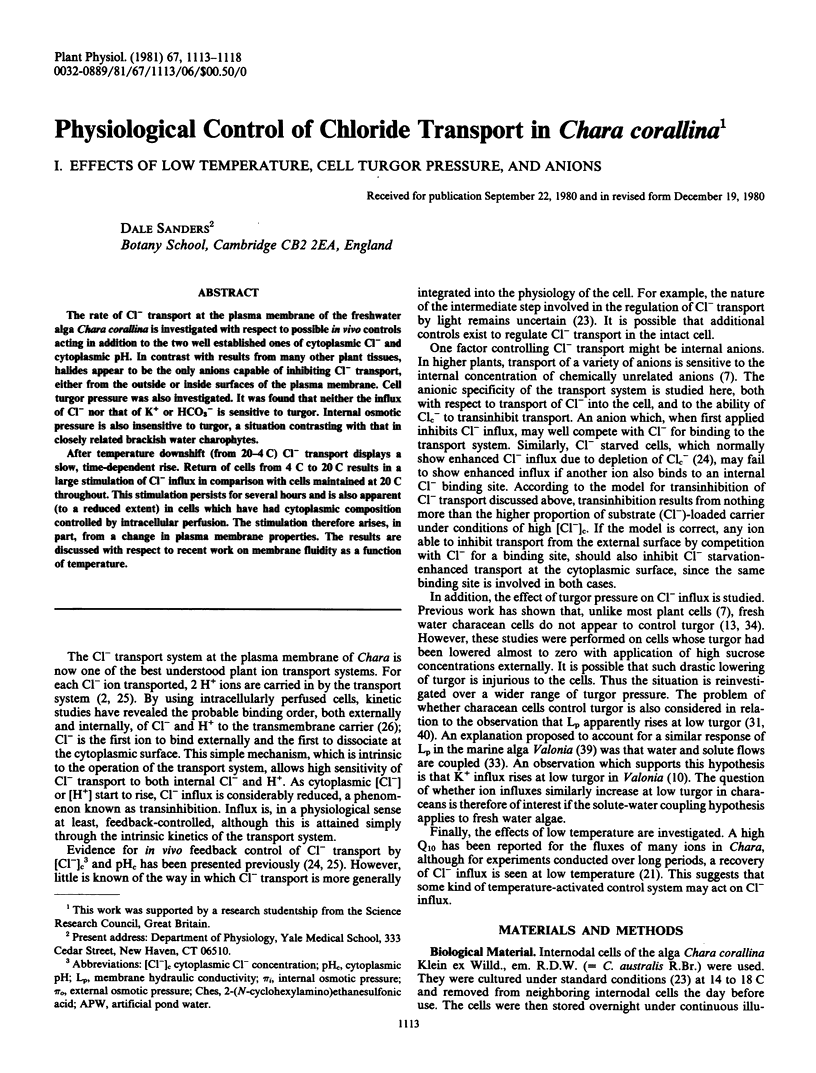
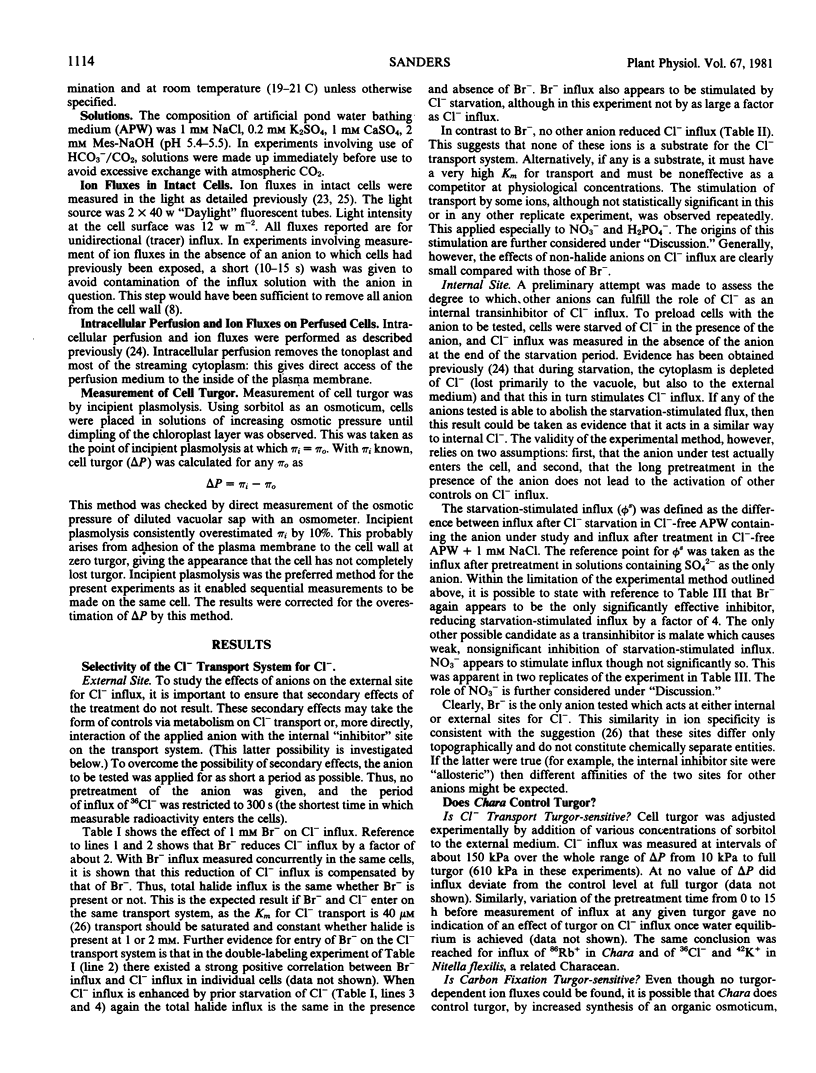
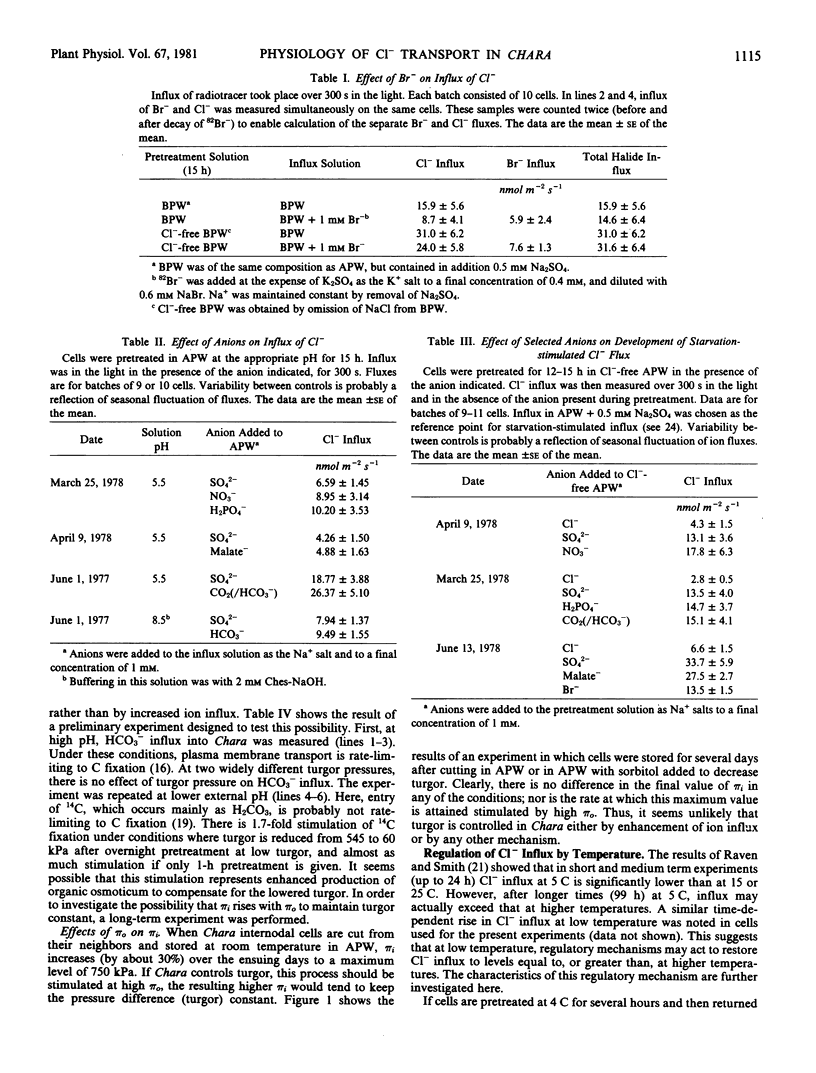
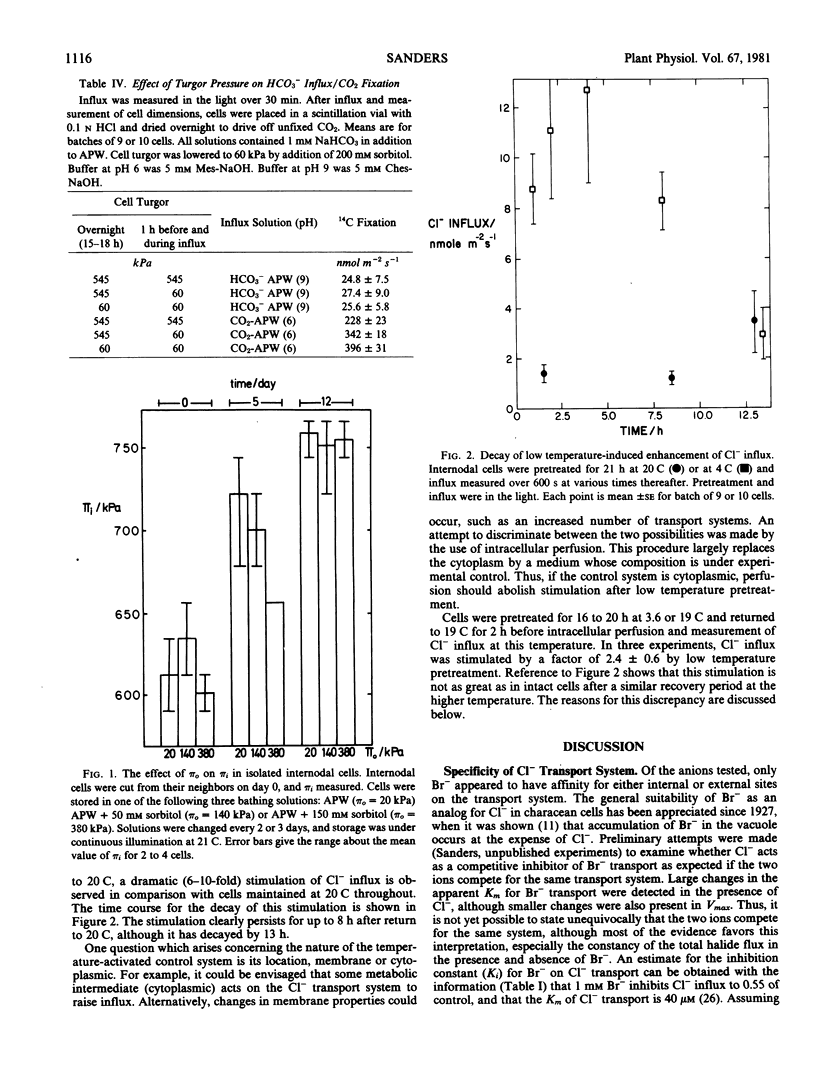
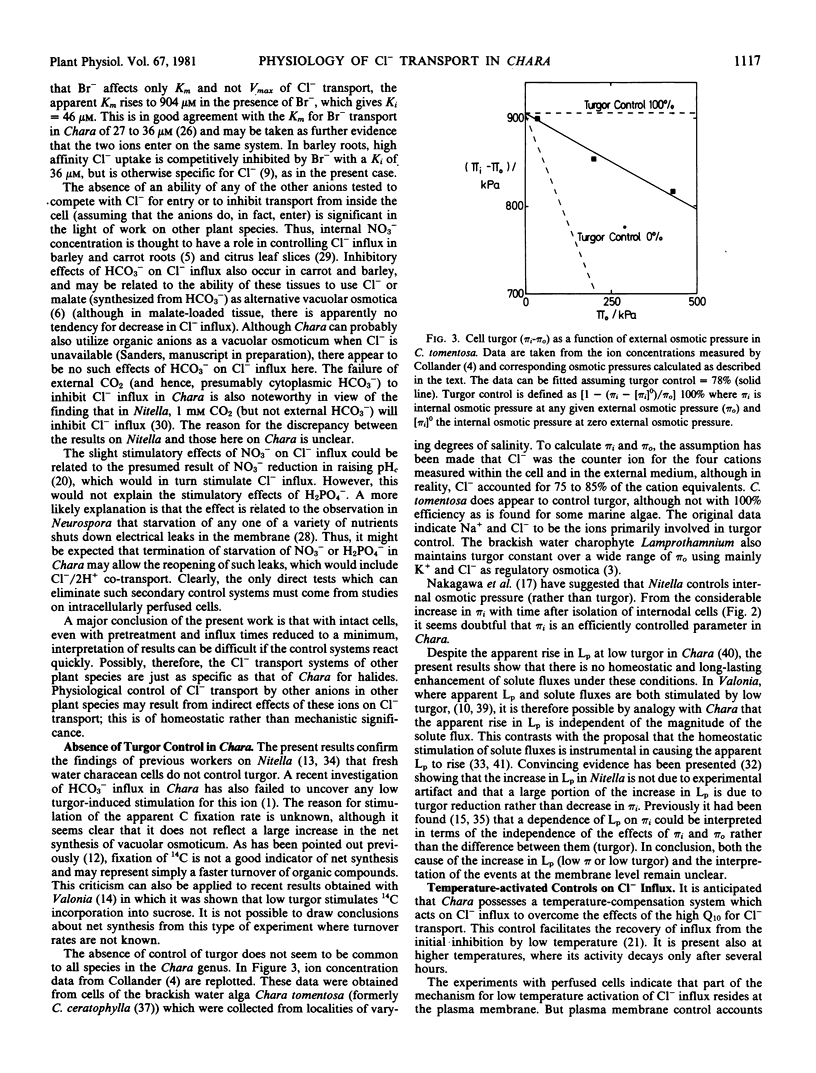

Selected References
These references are in PubMed. This may not be the complete list of references from this article.
- Elzam O. E., Epstein E. Absorption of Chloride by Barley Roots: Kinetics and Selectivity. Plant Physiol. 1965 Jul;40(4):620–624. doi: 10.1104/pp.40.4.620. [DOI] [PMC free article] [PubMed] [Google Scholar]
- Gutknecht J. Salt transport in Valonia: inhibition of potassium uptake by small hydrostatic pressures. Science. 1968 Apr 5;160(3823):68–70. doi: 10.1126/science.160.3823.68. [DOI] [PubMed] [Google Scholar]
- Jacoby B., Laties G. G. Bicarbonate Fixation and Malate Compartmentation in Relation to Salt-induced Stoichiometric Synthesis of Organic Acid. Plant Physiol. 1971 Apr;47(4):525–531. doi: 10.1104/pp.47.4.525. [DOI] [PMC free article] [PubMed] [Google Scholar]
- Pilch P. F., Thompson P. A., Czech M. P. Coordinate modulation of D-glucose transport activity and bilayer fluidity in plasma membranes derived from control and insulin-treated adipocytes. Proc Natl Acad Sci U S A. 1980 Feb;77(2):915–918. doi: 10.1073/pnas.77.2.915. [DOI] [PMC free article] [PubMed] [Google Scholar]
- Schaeffer B. E., Zadunaisky J. A. Stimulation of chloride transport by fatty acids in corneal epithelium and relation to changes in membrane fluidity. Biochim Biophys Acta. 1979 Sep 4;556(1):131–143. doi: 10.1016/0005-2736(79)90425-5. [DOI] [PubMed] [Google Scholar]
- Vigh L., Horváth I., Horváth L. I., Dudits D., Farkas T. Protoplast plasmalemma fluidity of hardened wheats correlates with frost resistance. FEBS Lett. 1979 Nov 15;107(2):291–294. doi: 10.1016/0014-5793(79)80393-2. [DOI] [PubMed] [Google Scholar]
- Yamada Y., Hara Y., Katagi H., Senda M. Protoplast Fusion: EFFECT OF LOW TEMPERATURE ON THE MEMBRANE FLUIDITY OF CULTURED CELLS. Plant Physiol. 1980 Jun;65(6):1099–1102. doi: 10.1104/pp.65.6.1099. [DOI] [PMC free article] [PubMed] [Google Scholar]
- Zimmermann U., Steudle E. The pressure-dependence of the hydraulic conductivity, the membrane resistance and membrane potential during turgor pressure regulation in Valonia utricularis. J Membr Biol. 1974;16(4):331–352. doi: 10.1007/BF01872422. [DOI] [PubMed] [Google Scholar]


